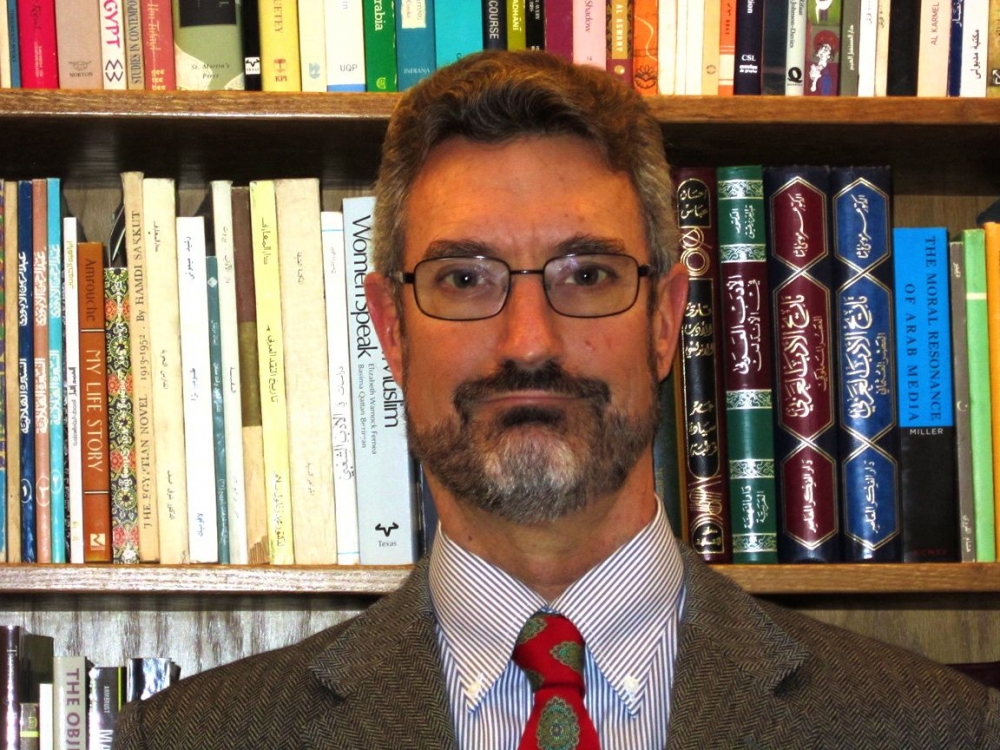Cultural Counterpoint
The political contours of the modern Arab world were created, in a sense, by Western politicians divvying up land and drawing borders after World War I and the collapse of the Ottoman Empire.
Those lines created single countries, such Iraq and Libya, where once separate and distinct regions had existed. Borders and states were created to satisfy Western political needs more than as a response to local interests and aspirations. Yet they are still in place today.
In a part of the globe with such a fragmented past, what connects inhabitants to their homelands in the present and what will foster those bonds in the future?
Such is the central inquiry of “The Cambridge Companion to Modern Arab Culture” (Cambridge University Press, 2015), a new volume edited by UC Santa Barbara’s Dwight Reynolds, a professor in the Department of Religious Studies who specializes in Arabic language and literature.
“It is meant to reflect Arab culture as Arabs live it, and as they experience it, and it is also meant, in some sense, to answer the question, ‘What makes Arabs Arab?’” Reynolds said of the book. “Given the cultural diversity of the Arab countries, why and how do they think of themselves as Arab? That turns out to be a very tricky question. There are multiple levels to all of our identities, but the situation is probably even more complex within the so-called ‘Arab world.’
“Much of what we explore in this book is the relationship between the things that unite people in the larger sense and the things that distinguish them from each other,” he added. “The book, I hope, does a good job of demonstrating this in a variety of different ways.”
The collection of essays from leading international scholars seeks to provide a comprehensive examination of Arab culture from the early 19th century to today, looking at everything from poetry and narrative to television and film to architecture, folklore and food. Chapters on humor, art, theater and music, as well as language, law, ethnic and religious minorities and migration, Reynolds explained, also help to paint a more complete and accessible picture of everyday life in the Arab world.
“The Middle East is perhaps the least well understood region of the world that is constantly in the news,” Reynolds said. “There are so many negative stereotypes and misconceptions — constant headlines about political conflicts, religious issues and economics. The entire 300-million-plus Arab world (population) gets tarred with that brush and Westerners find it difficult to imagine Arabs living their lives and not being constantly involved in religious or political conflict.
“They live their lives,” he continued, “and with this book, we try to give a sense of the richness of the culture that they participate in — from folklore and housing to contemporary literature and cinema; it is meant to be a counterpoint to the news headlines.”
Surveying key issues and components of the modern Arab world also meant reflecting on its cultural evolution. Specifically, the book takes an in-depth look at a major social and intellectual movement in the mid-19th century through the early 20th century. Known in Arabic as the Nahda, it was akin, in English, to a renaissance, or awakening.
Beginning as a linguistic movement to modernize literary style and vocabulary, the Nahda ultimately grew to encompass all aspects of Arab culture as well as the education system, government administration and even financial institutions. That renaissance, Reynolds notes in his introductory remarks, is now considered “the most important Arab cultural movement of the modern period.”
“The question then became, ‘Which aspects of this process are modernization, and which are Westernization?’” he said of the debates that arose during the Nahda. “‘How can I continue being Arab in the traditional sense and still be modern?’”
In that way, Reynolds explained, the Nahda naturally informed all that came after, serving to frame Arab culture even today. More than the region’s robust history, its vibrant “now” is what he wants readers to take from the book.
“I hope the reader will come away with a sense of the richness of Arab culture beyond the headlines, beyond the current political crises, beyond the religious issues,” Reynolds said, “and come to realize that millions and millions of Arabs go about their daily lives creating, enjoying (and) participating and being artistically involved in all aspects of their culture.”





